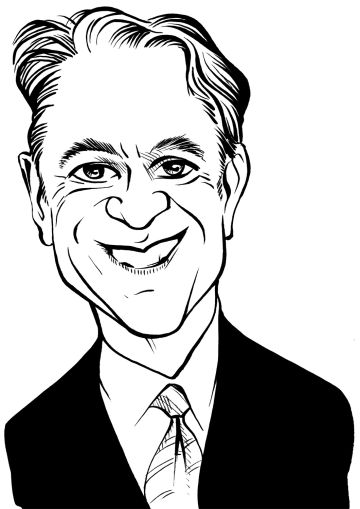The history of public housing in America dates back to President Franklin D. Roosevelt and the New Deal. Even then, the primary driver behind the construction of public housing units was job creation. Since that time, developers and investors had very little interest in the success or failure of these properties, as long as such properties were located far enough away as to have little or no impact on their own market-rate units.
Until now, that is. Many developers now believe that a program rolled out in 2013, the Rental Assistance Demonstration (RAD) Program, is the most dynamic opportunity available in the affordable-housing arena.
The RAD program was a response to the growing gap between the amount of federal capital subsidy grants available and the projected costs of maintaining an aging stock of public housing. Many of these building are more than 50 years old and are falling victim—literally—to long-deferred maintenance. The backlog results in 10,000 affordable housing units leaving the housing program each year.
The challenges associated with maintaining quality public housing are not new. When I chaired the U.S. House of Representatives Subcommittee for Housing and Community Opportunity in the 1990s, public housing authorities (PHAs) around the country were warning that the dozens of boutique grant programs were making it impossible to fulfill their mandate. They argued against federal regulation and pressed for income-targeting flexibility and funding fungibility in exchange for tougher compliance standards.
In response, I wrote the Quality Housing and Work Responsibility Act which, among other reforms, collapsed dozens of programs into a more efficient and flexible two: a Capital Fund and an Operating Fund. The bill was signed into law by President Clinton in 1999, and shortly thereafter, Congress authorized $3 billion for the Capital Fund.
Unfortunately, by 2013, funding for the program had declined to $1.875 billion. Most observers concluded that such a shortfall was unsustainable.
Accepting this reality, U.S. Secretary of Housing and Urban Development (HUD) and former Commissioner of the New York City Department of Housing Preservation and Development Shaun Donavan guided the creation of RAD, which allows for the voluntary conversion of public housing units to income-restricted units with project-based Section 8 subsidies. The amount of the subsidy is equivalent to the previously existing subsidies for the particular building in which the units that are being converted.
The conversion also generally results in a 15- or 20-year Section 8 contract that includes an Operating Cost Adjustment Factor (OCAF) rent increase each year. The property is transferred into a new entity, usually a limited partnership, and a private not-for-profit or a for-profit entity becomes a partner. With the collateral of a long-term subsidy contract, the new entity is able to take on debt and attract new equity, usually in the form of either 9 percent or 4 percent equity from the Low Income Tax Credit program.
Clearly, the RAD program is of benefit to private investors. But does it help residents of public housing? Yes, and the proof is in the growing support of PHAs for the program. While converting public housing to Section 8 subsidy, RAD ensures long-term affordability and other protections to existing residents.
Today, there are approximately 1.1 million households living in public housing units in the U.S. HUD provides federal aid to the 3,300 PHAs that manage these units. The largest of these, the New York City Housing Authority (NYCHA), officially houses 620,000 people and has historically been skeptical of efforts to attract private capital.
Now, however, NYCHA chair Shola Olatoye is changing the way the authority is funding, operating and rehabilitating its housing stock. This effort includes a RAD application for 24 buildings comprising 1,400 units in Far Rockaway, Queens. The housing authority estimates that this community alone needs about $174 million in major improvements and upgrades over the next two decades. Facing $17 billion in total unmet capital repair needs, RAD has become a key component of NextGeneration NYCHA, NYCHA’s 10-year strategic plan to modernize public housing in the city.
The response by PHAs across the nation has likewise been encouraging. The original law authorizing RAD envisioned it as a pilot, and conversions were limited to 60,000 units. This cap was quickly eclipsed and last year advocates were successful in raising the cap to 185,000 unit—although the current volume of applications in the pipeline makes it clear that this new cap is inadequate.
The current Senate Appropriations bill increases the authorization to 250,000 units and further authorizes RAD conversions for Section 202 properties, which provide housing for the elderly. Discussions with key House Republicans indicated that they may favor eliminating the cap altogether.
Importantly, a PHA does not need to convert its entire housing portfolio to benefit from the RAD program. While slightly more than half of all PHAs have converted their entire stock, many others are selective about which buildings they will submit for consideration. Where a building’s condition has deteriorated beyond rehabilitation, the program allows for it to be torn down and replaced on the same site.
There are several important issues that must be taken into consideration before a conversion to the RAD program. (Flexibility in ownership, property-management questions and more.) But ultimately, PHAs are driving an exciting transformation toward a modern asset management and development model that benefits investors, owners, managers and residents alike. We are still learning during the early stages of this evolution, but the path is promising.



